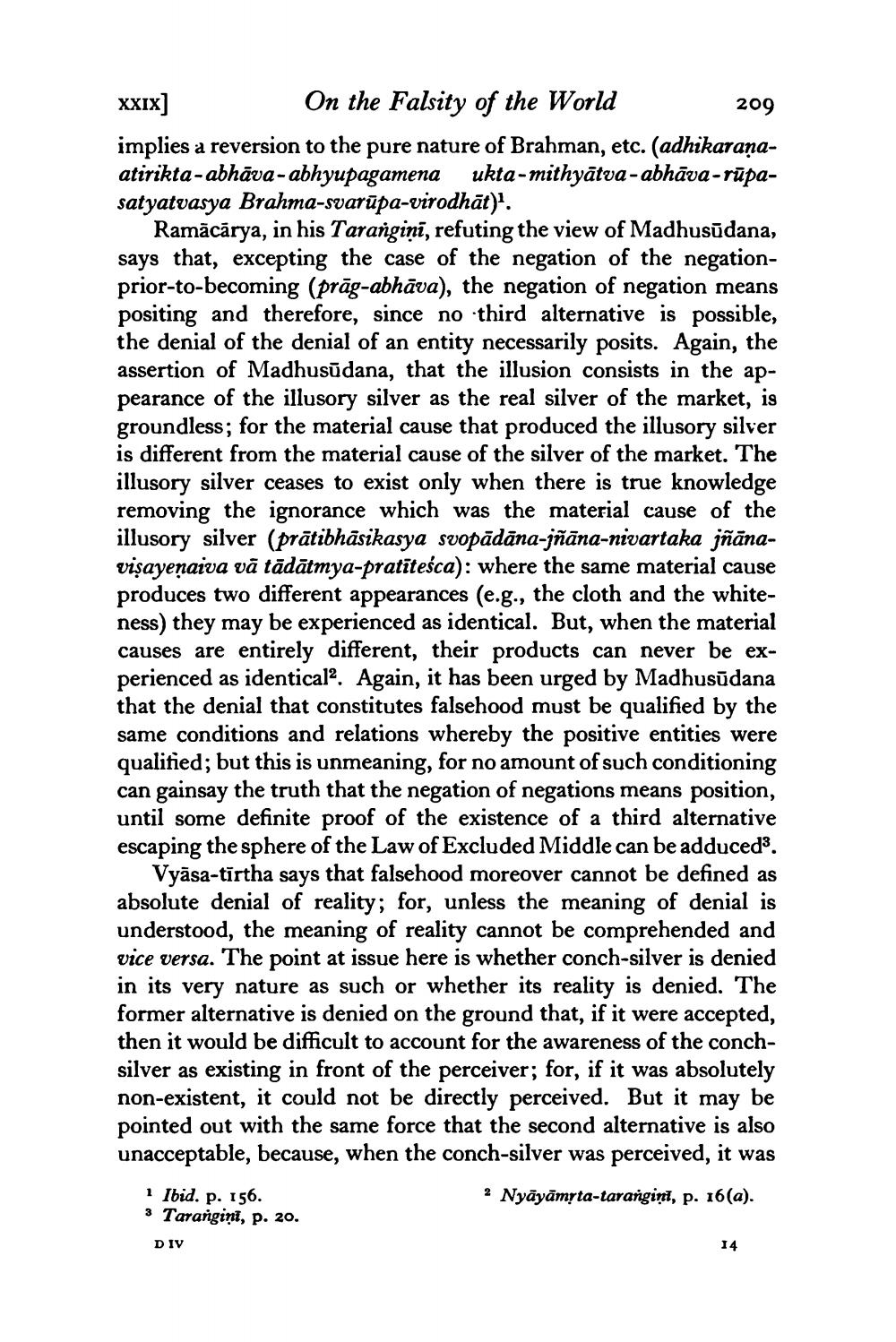________________
XXIX] On the Falsity of the World 209 implies a reversion to the pure nature of Brahman, etc. (adhikaranaatirikta-abhāva-abhyupagamena ukta-mithyātva - abhāva-rūpasatyatvasya Brahma-svarūpa-virodhāt)".
Ramācārya, in his Taranginī, refuting the view of Madhusūdana, says that, excepting the case of the negation of the negationprior-to-becoming (prāg-abhāva), the negation of negation means positing and therefore, since no third alternative is possible, the denial of the denial of an entity necessarily posits. Again, the assertion of Madhusūdana, that the illusion consists in the appearance of the illusory silver as the real silver of the market, is groundless; for the material cause that produced the illusory silver is different from the material cause of the silver of the market. The illusory silver ceases to exist only when there is true knowledge removing the ignorance which was the material cause of the illusory silver (prātibhāsikasya svopādāna-jñāna-nivartaka jñānavişayenaiva vā tādātmya-pratīteśca): where the same material cause produces two different appearances (e.g., the cloth and the whiteness) they may be experienced as identical. But, when the material causes are entirely different, their products can never be experienced as identical?. Again, it has been urged by Madhusudana that the denial that constitutes falsehood must be qualified by the same conditions and relations whereby the positive entities were qualified; but this is unmeaning, for no amount of such conditioning can gainsay the truth that the negation of negations means position, until some definite proof of the existence of a third alternative escaping the sphere of the Law of Excluded Middle can be adduced3.
Vyāsa-tirtha says that falsehood moreover cannot be defined as absolute denial of reality; for, unless the meaning of denial is understood, the meaning of reality cannot be comprehended and vice versa. The point at issue here is whether conch-silver is denied in its very nature as such or whether its reality is denied. The former alternative is denied on the ground that, if it were accepted, then it would be difficult to account for the awareness of the conchsilver as existing in front of the perceiver; for, if it was absolutely non-existent, it could not be directly perceived. But it may be pointed out with the same force that the second alternative is also unacceptable, because, when the conch-silver was perceived, it was
2 Nyāyāmsta-tarangini, p. 16(a).
1 Ibid. p. 156. 3 Tarangini, p. 20. DIV
14




